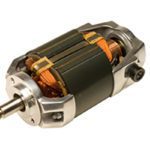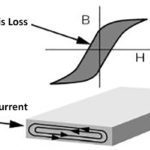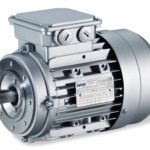While there is no broad standard that defines severe duty motors, the IEEE 841-2009 standard, which addresses “premium efficiency, severe duty, totally enclosed fan-cooled (TEFC), squirrel-cage induction motors — up to and including 370 KW (500 hp),” is often used as a benchmark.

However, this standard was written for the petroleum and chemical industries, and many of its specifications are designed to address motors used in pumps, fans, and blowers in petroleum and chemical applications.
But manufacturers often use the IEEE 841 standard as a benchmark for motors that are designed or marketed for other industries, adopting those features and specifications that are relevant to their applications and performance requirements.
In many cases, a motor labeled as “severe duty” falls between a standard TEFC motor and an IEEE 841 rated motor.
A totally enclosed fan-cooled (TEFC) motor has a frame that prevents air exchange between the inside and outside of the motor, preventing airborne contamination — and to some extent, liquids — from entering the motor. An external fan forces air over the frame to assist with cooling, and the frame is ribbed to increase the surface area for dissipating heat.
This is in contrast to an open drip-proof (ODP) motor, which has open vents that allow air to circulate directly over the motor windings. The design of an ODP motor prevents liquid from entering through the housing within a 15 degree angle from vertical, but there is no protection against airborne contamination.
According to the IEEE 841 standard, severe duty motors are used in the following service conditions:
- Ambient temperatures from -25° C to 40° C (-13° F to 104° F)
- Altitude to 1000 m (3281 ft)
- Humid, corrosive, or salty environments
- Full voltage starting
- Class I, Division 2: explosive gas or vapor present during abnormal operation, but not likely to exist under normal operating conditions
To address these extreme conditions, severe duty motors are commonly made from cast iron and use higher-quality paint for better corrosion-resistance. Improved seals, such as V-rings in place of O-rings, are generally required for both the drive end and non-drive end of the motor, to provide increased protection against solid and liquid contamination. And the standard ingress protection (IP) rating for severe duty motors is IP55, which specifies limited ingress of dust and of water from a water jet nozzle.
The rotor cage of a severe duty motor is typically made of copper or aluminum, and the fan is made of bronze alloy or conductive plastic to prevent sparking. Severe duty motors should use class F insulation with a 1.15 service factor, which means their max operating temperature is up to 155° C, or 311° F, and allowable temperature rise is 115° C, or 239° F.
The IEEE 841 standard also sets out specific guidelines for the construction of the main terminal box, which must be cast iron and gasketed. Vibration allowances are 0.08 in/s (2.0 mm/s), and corrosion resistance of the main components is based on a 96-hour salt spray test.
While these specifications are specific to IEEE 841 rated motors, many of them are incorporated into severe duty motors for the general market. In addition, severe duty motors typically have a warranty of 3 years or more — an improvement over the 1 year or 18 month warranty found on most general-purpose motors.
 Notice that the IEEE 841 standard applies to “premium efficiency” motors, as defined by the National Electrical Manufacturers Association (NEMA). In 2016, the Department of Energy (DOE) issued the “Integral Horsepower Motor Final Rule,” which mandates that all industrial electric motors from 1 to 500 hp, manufactured after June 1, 2016, must meet NEMA premium efficiency standards.
Notice that the IEEE 841 standard applies to “premium efficiency” motors, as defined by the National Electrical Manufacturers Association (NEMA). In 2016, the Department of Energy (DOE) issued the “Integral Horsepower Motor Final Rule,” which mandates that all industrial electric motors from 1 to 500 hp, manufactured after June 1, 2016, must meet NEMA premium efficiency standards.
In compliance with this rule, the majority of severe duty motors, even if they are not fully IEEE 841 compliant, are designed to meet premium efficiency standards. The DOE rule only applies to motors manufactured or imported for sale in the U.S. However, the NEMA premium efficiency designation is generally comparable to the IEC 60034-30-1 classification of IE3.
Feature image credit: WEG







Leave a Reply
You must be logged in to post a comment.